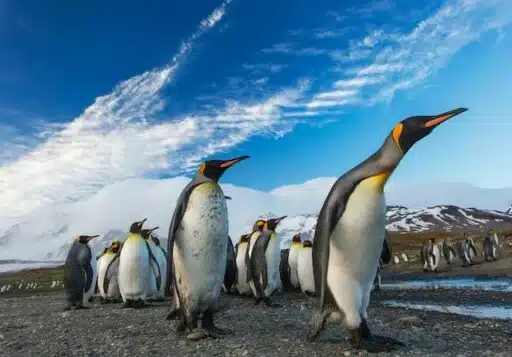Do you want to know more about the Emperor Penguin? Here is everything you need to know!
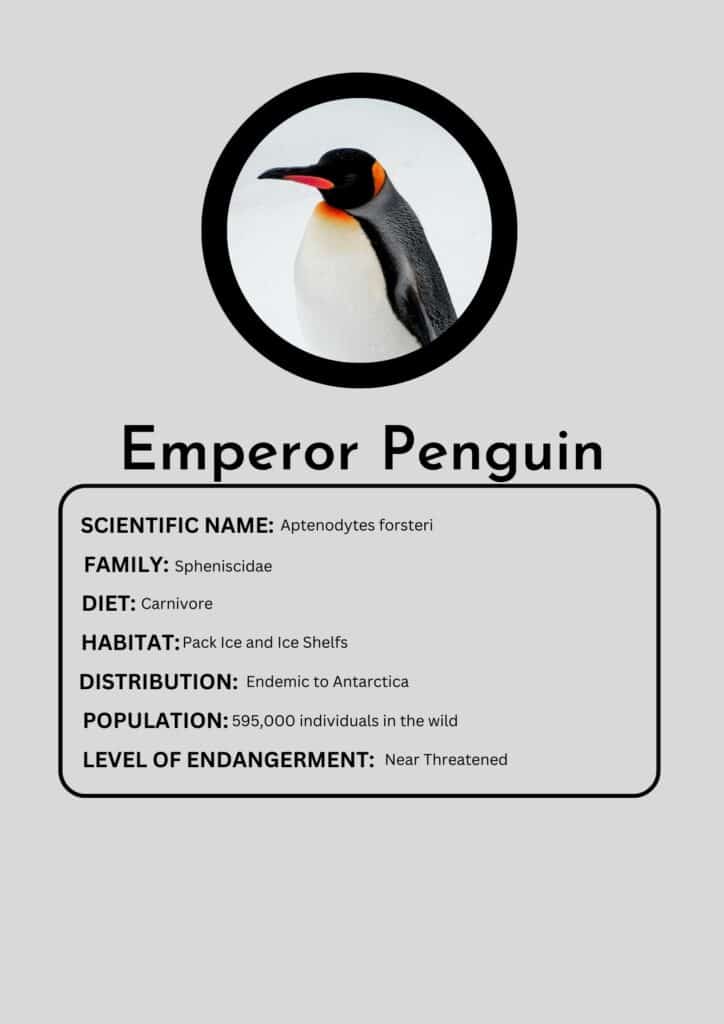
Appearance
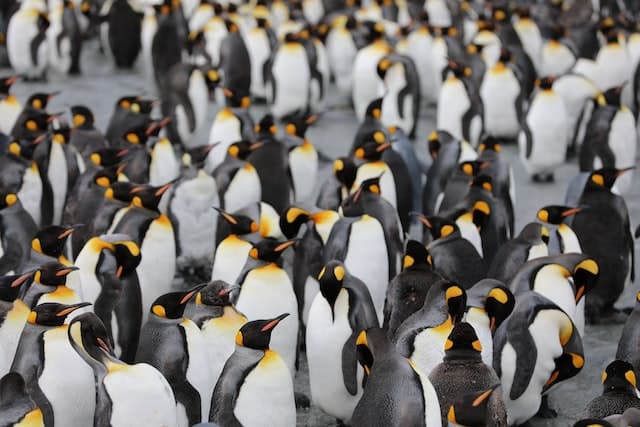
The family of Spheniscidae includes all species of aquatic and flightless birds, in other words, it’s the family of penguins. The Emperor Penguin is the largest one out of all 18 species belonging to the penguin family. In fact, they constitute the fifth largest bird on our planet.
The Emperor penguins are majestic creatures and are truly deserving of their name “emperors”. Normally, an adult Emperor Penguin measures 42 – 47 inches in height and reaches weights of 50 – 100 lb.
As per usual males tend to weigh more than females, but their weight fluctuates considerably during the breeding season. Although males weigh more at the beginning of the season, both females and males will weigh 50 lb on average at the end of the season. The reason for the male’s steeper weight loss – losing almost 50% of his body weight – is due to not eating anything for 2 – 4 months when safeguarding his egg.
To assist with their swimming endeavors, their bodies are perfectly streamlined and their wings are stiff to function as flippers. These adaptations allow them to reach speeds of 5 mph.
Likewise, their bodies are adapted in many other ways to withstand extreme cold. Their beaks and flippers are quite small in proportion to the rest of their body to minimize heat loss.
For proper insulation they have two layers of feathers, including feathers on their ankles.
They are permanently dressed in tuxedos, with their heads and backs being black and their chests being white. Some yellow and orange patches adorn the head, neck, and chest.
Habitat and Distribution
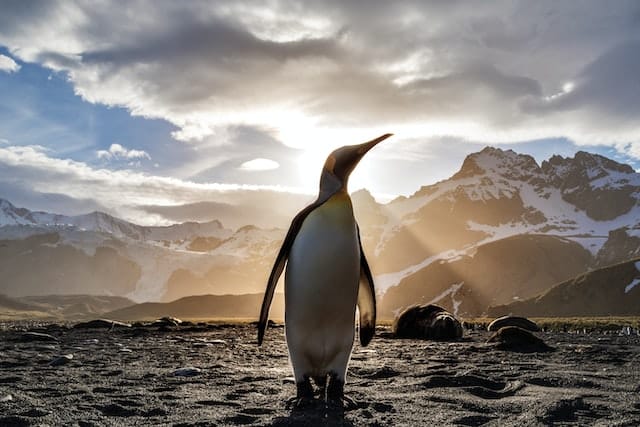
The Emperor Penguin is endemic to Antarctica, the very south of our planet.
Unlike many other species, the Emperor’s distribution is oddly specific; they only exist between the 66° and 77° latitudes.
According to estimations, their total population is 595,000 at the moment. Although this number is stable, they are nonetheless classified as “near threatened” as per the IUCN’s Red List. It is only a matter of time before climate change will severely impact them.
Emperor Penguins spend half of their lives in water, and half on land – or on ice to be precise. Consequently, the melting ice caps particularly affect them. Recently, recordings of colonies living on shelf ice rather than sea ice prove that they are already feeling the effects of global warming. Likewise, reduced food availability and even Antarctica’s tourism is causing their population to decline.
Adult Emperors continuously travel between the ocean and the colony, except for males who are completely stationary for the duration of the breeding season.
Emperor penguins stay in colonies and help each other with hunting and nesting. The size of a colony can range from a couple of hundred individuals, stretching to as many as 20,000 penguins.
Diet
The Emperor Penguin follows a carnivorous diet consisting exclusively of marine animals, as there are few alternatives in the icy climate of Antarctica. They mostly prey on fish, Antarctic silverfish being their most frequent catch. Moreover, they also consume crustaceans, krill, and some types of squid.
Emperor Penguins are immaculate divers. When hunting they dive down to depths of roughly 160 feet. This allows them to clearly see their prey from underneath, before swooping up and catching their dinner. They repeat this multiple times before reemerging and catching their breath.
In order to manage such long and deep dives, their non-essential organs shut down and their heart rate drops to 15 beats per minute. The deepest dive recorded by man reached depths of 1,850 feet and lasted 22 minutes.
The range they cover in search of food is equally impressive. During a single hunt, they can swim distances of 900 miles.
Mating and Life Cycle
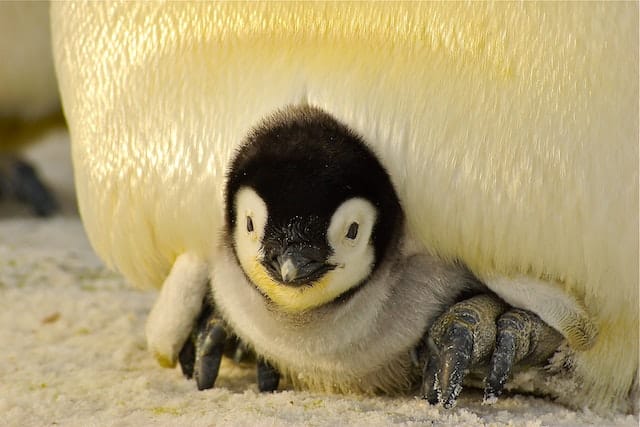
Mating occurs during a fairly specific time slot, usually between late March – early April. This is not by chance, but rather a careful calculation to make sure that their offspring are fully developed by midsummer – when their chance of survival is highest. Emperor Penguins can determine when it’s time by observing decreased daylight hours.
Before the breeding season, both males and females spend 2 months at sea to fatten up. Females need the fat reserves for producing the offspring. Equally, the males need it in order to brood the egg without feeding for months.
Contrary to the common belief Emperor Penguins do not mate for life but only stay faithful for a season. However, about 15% of couples find their way back to each other the next year – which is mighty impressive considering the humongous size of their colonies.
The female lays a single egg early in June, upon which she departs for the sea to feed and the male takes over and incubates the egg. Males have a specific brood pouch, a featherless patch, which keeps the egg warm and cozy. When the weather is particularly glacial, colonies will huddle together to provide extra warmth, taking turns to go in the middle where it’s warmest.
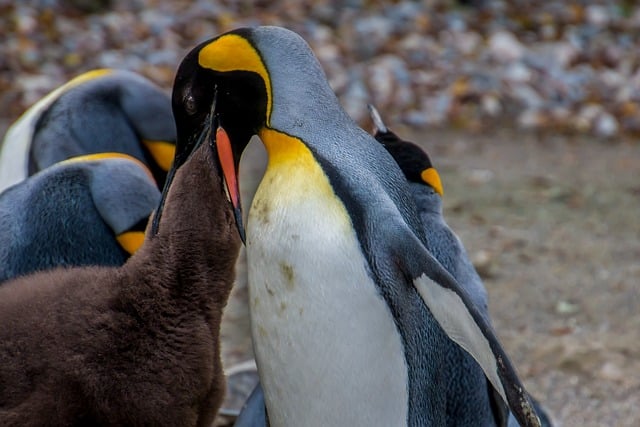
In late July or early August, the egg finally hatches. The male feeds the newborn chick a “crop milk”, produced in his oesophagus while awaiting the arrival of the mother. As soon as the mother arrives it’s the father’s time to head out to sea and feed, by now he has not eaten for about 4 months. When chicks are roughly 2 months they huddle together with other chicks, in a “crèche”, so that both parents can feed at the same time. By December chicks begin to swim and hunt for fish on their own.
In the wild Emperor Penguins live to be 20 years old, and in captivity, they sometimes reach twice that age.
Fun Facts – That We Bet You Didn’t Know About Emperor Penguins
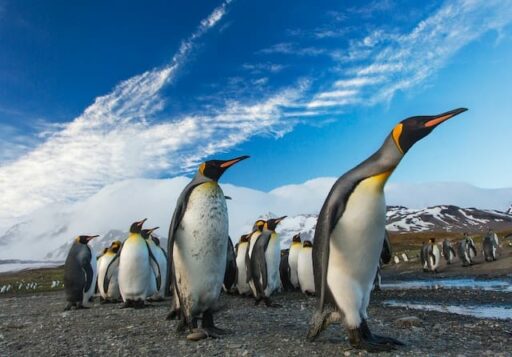
Emperor Penguins are extremely strong animals. Once it took 6 adult men, and a lot of struggle and combatting, to capture a single male Emperor Penguin for zoo-keeping.
The Emperor Penguin’s size is already impressive, but their ancestors are even more so. Fossil findings indicate that their ancestors measured 6,5 feet in height and weighed as much as 250 lbs.
Although they are not very agile creatures when on land, Emperor Penguins are able to climb steep and slippery ice shelves, sometimes they even breed on them. Scientists believe this might be an adaption to climate change and the subsequent melting ice caps. However, in the long run, this is not viable and the species will need protection in order to survive.
Moreover, in popular culture the Emperor Penguin is frequently depicted alongside polar bears, which in fact is an impossible scenario since the latter are endemic to the Arctic, the very north of our planet.
Thank you for reading this article! If you want to uncover more knowledge about bird species head over to read about Interesting Birds Around the World!
- Escaped Elephant Takes a Walk in Montana - April 17, 2024
- Baby Gorilla Transferred to Foster Parents at Cleveland Zoo - April 17, 2024
- 6 Amazing Facts About 6 Different Dinosaurs - April 17, 2024

